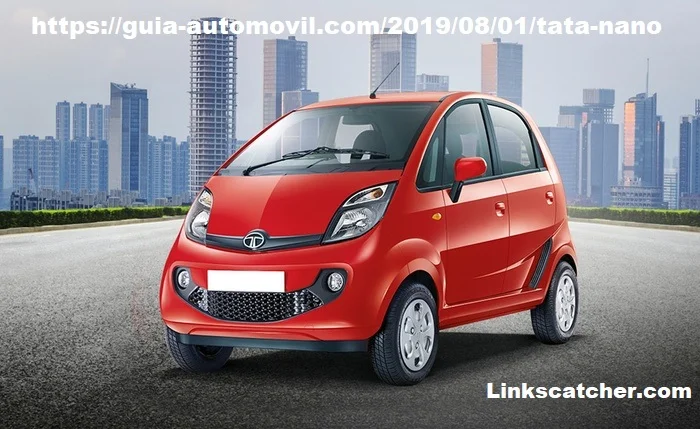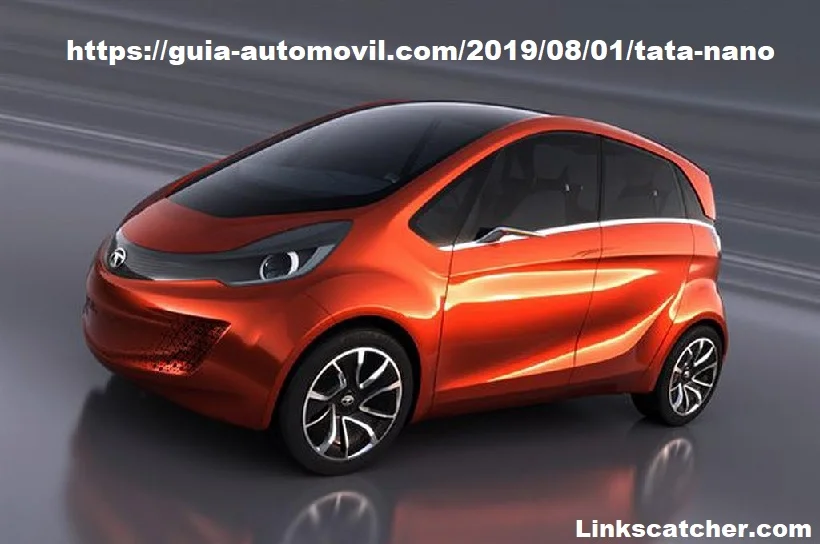
The https://guia-automovil.com/2019/08/01/tata-nano, often referred to as the “People’s Car,” holds a unique place in automotive history. Launched with the promise of revolutionizing personal transportation for the masses, this compact vehicle was more than just a car; it was a vision of affordable mobility. The story of the Tata Nano is one of ambition, innovation, and a few bumps along the road.
The Vision behind https://guia-automovil.com/2019/08/01/tata-nano
Ratan Tata, the then-chairman of Tata Motors https://guia-automovil.com/2019/08/01/tata-nano, envisioned a car that would make personal transportation accessible to millions of families who could not afford traditional cars. His dream was to create a vehicle that was not only affordable but also safe and reliable, providing an alternative to the two-wheelers that many families relied on.
Addressing the Need for Affordable Transportation
India, with its rapidly growing middle class, had a pressing need for affordable transportation. The Tata Nano has conceived to fill this gap, offering a safer and more comfortable option than motorcycles, especially for families.
Development and Design
The Tata Nano’s journey from concept to reality has filled with challenges. The design team, led by talented engineers, aimed to create a car that has not only cost-effective but also met all the necessary safety and environmental standards.
Creating a car with a target price of one lakh rupees (approximately $2,500) was no small feat. The team had to innovate at every step, from sourcing materials to simplifying the design. This included using a rear-engine layout and reducing the number of components.
Launch and Reception
The Tata Nano has officially launched in 2008 at the 9th annual Auto Expo in New Delhi. The event has highly anticipated, drawing significant media attention and public interest. The initial reaction was a mix of awe and skepticism. While many applauded Tata Motors for its groundbreaking achievement, others questioned the car’s safety and practicality.
The initial sales of the https://guia-automovil.com/2019/08/01/tata-nano were promising, with thousands of pre-orders. However, production delays and other challenges soon impacted the delivery and overall sales performance.
Technical Specifications

The Tata Nano has powered by a small 624cc, two-cylinder engine, producing 38 horsepower. Despite its modest power, the Nano has designed to nimble and efficient for urban driving. One of the Nano’s standout features was its fuel efficiency. With a mileage of around 20-25 kilometers per liter, it was an economical choice for budget-conscious consumers. While the Nano met basic safety standards, it lacked some of the advanced safety features found in more expensive cars. This became a point of contention and criticism over time.
Pricing Strategy
Cost Considerations: The pricing of the https://guia-automovil.com/2019/08/01/tata-nano was its most attractive feature. Tata Motors managed to keep the costs low through innovative engineering, cost-effective materials, and efficient production techniques.
Market Positioning: The Nano has positioned as the world’s cheapest car, targeting first-time car buyers. The families looking for an upgrade from two-wheelers.
Marketing and Promotion
Tata Motors invested heavily in marketing the Nano. The advertising campaigns highlighted the car’s affordability, fuel efficiency, and practicality, aiming to build a strong brand identity. The Nano has positioned as a revolutionary product, emphasizing its role in transforming personal transportation in India.
The primary target audience for the Nano included young families, urban dwellers, and individuals seeking a cost-effective means of personal transportation.
Impact on the Automotive Market
The introduction of the Nano prompted responses from competitors. With some automakers exploring the possibility of producing their own low-cost vehicles. The Nano’s low price point put pressure on other car manufacturers to reconsider their pricing strategies, particularly in the budget segment.
Customer Experience
Reviews from Nano owners were mixed. While many appreciated the affordability and fuel efficiency, others expressed concerns about the car’s build quality and safety features. Common issues reported by owners included mechanical problems, lack of features, and concerns about the car’s stability and durability.
Evolution and Variants
Over the years, Tata Motors introduced several updates and improvements to the Nano, addressing some of the initial concerns and enhancing the car’s features. The Nano was offered in various models and editions, including the Nano Twist and Nano GenX, each with incremental improvements and added features.
Challenges and Controversies
The production of the Nano faced several hurdles, including delays due to relocation of the manufacturing plant and supply chain issues. The Nano faced criticism for its safety standards, with some high-profile incidents raising questions about its overall safety and reliability.
Global Presence and Export
While the Nano was primarily targeted at the Indian market, Tata Motors explored opportunities for exporting the car to other emerging markets. The strategy included slight modifications to meet the regulatory requirements of different countries, but the Nano’s global impact remained limited.
Tata Nano in Popular Culture
The Nano appeared in various media forms, from movies to TV shows, often symbolizing innovation and the dream of affordable transportation. In India, the https://guia-automovil.com/2019/08/01/tata-nano became a cultural icon, representing the aspirations of millions and the potential of Indian engineering and innovation.
The Decline and End of Production
Several factors contributed to the decline in Nano’s sales, including increased competition, rising production costs, and persistent safety concerns. In 2018, Tata Motors officially ended the production of the Nano, marking the end of a significant chapter in automotive history.
Legacy of Tata Nano
Despite its commercial challenges, the Nano left a lasting impact on the automotive industry, highlighting the potential for innovation in cost-effective transportation. The Nano’s journey provided valuable lessons in product development, market positioning, and the importance of meeting customer expectations.
The legacy of the Nano continues to inspire efforts to create affordable and sustainable transportation solutions for the future.
Conclusion of https://guia-automovil.com/2019/08/01/tata-nano
The Tata Nano’s story is one of ambition, innovation, and valuable lessons. While it may not have achieved all its lofty goals, its impact on the automotive industry and the vision it represented will be remembered for years to come.
FAQs about https://guia-automovil.com/2019/08/01/tata-nano
What was the main goal of the Tata Nano project?
The main goal was to create an affordable car that could provide safe and reliable transportation for millions of families in India and other emerging markets.
How much did the Tata Nano cost?
The Tata Nano was initially priced at around one lakh rupees (approximately $2,500), making it the world’s cheapest car at the time of its launch.
Was the Tata Nano successful?
While the Nano garnered significant attention and initial sales, it ultimately faced numerous challenges that affected its long-term success.
What were the main criticisms of the Tata Nano?
Criticisms included concerns about safety, build quality, and mechanical reliability, as well as challenges related to production and marketing.
Is there any plan to revive the Tata Nano?
As of now, there are no official plans to revive the Tata Nano, but its legacy continues to influence discussions about affordable and sustainable transportation solutions.